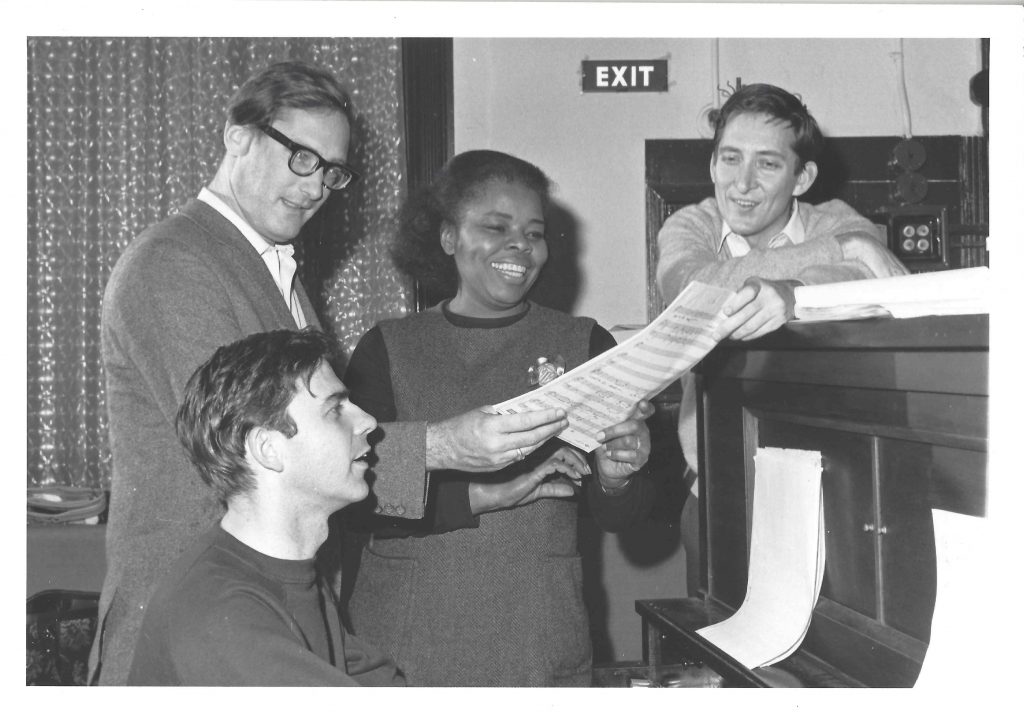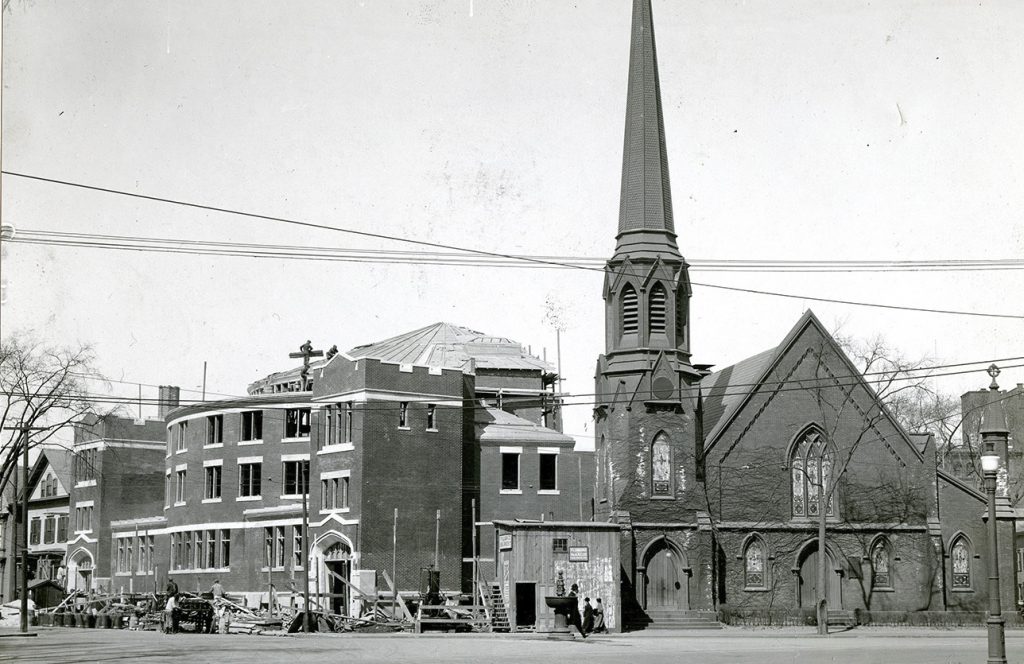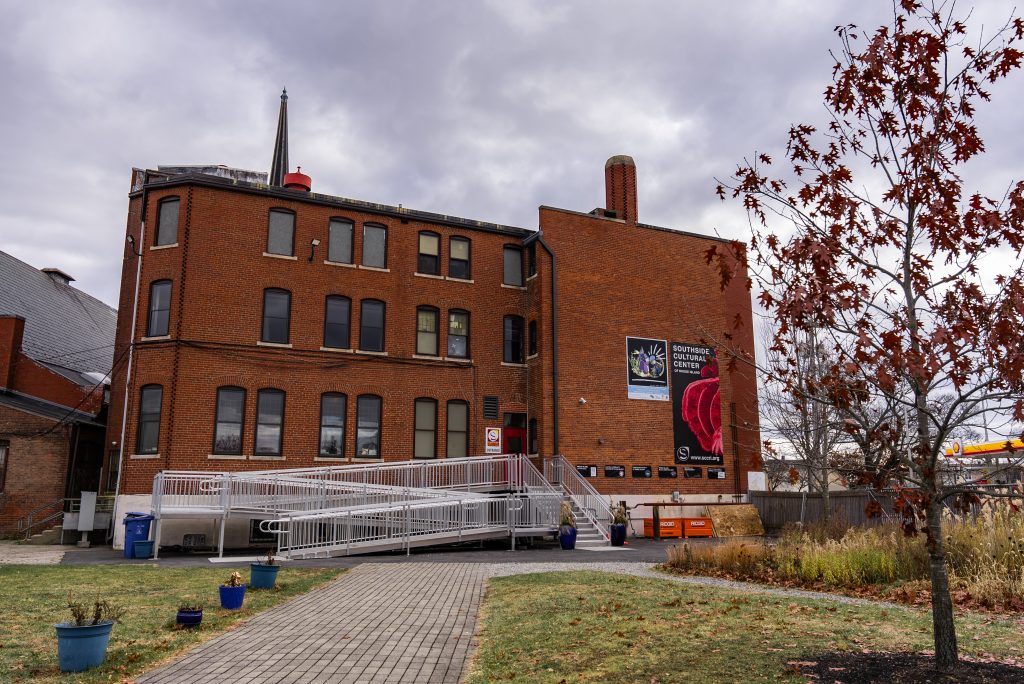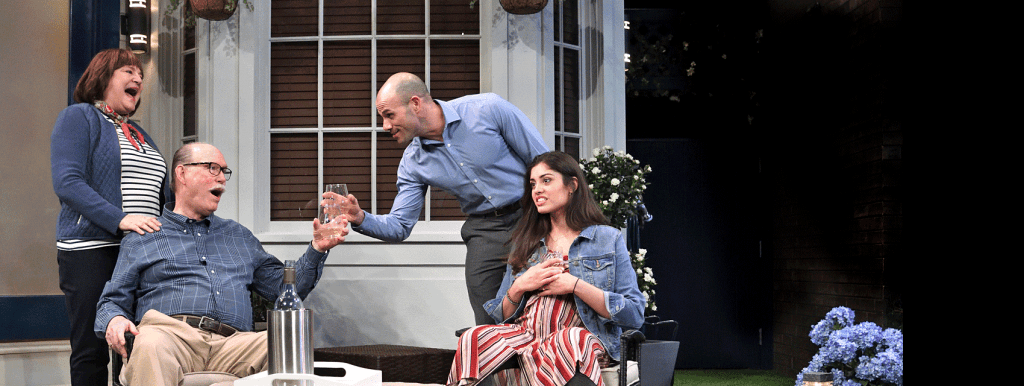The Southside Cultural Center, 2023. Photo by Kris Laliberte.
From Trinity Square to the Southside Cultural Center
by Kris Laliberte, marketing apprentice
To understand the story of La Broa’ (Broad Street), you must understand the roots of the historic Southside of Providence. Many of the stories in the play happen around Broad Street – also home to the Trinity United Methodist Church, the Southside Cultural Center:
Do you ever walk into a space and know immediately it has a deep, rich history? Step inside the Southside Cultural Center (SCCRI), and you’ll sense the history in the walls the moment you enter.

The floorboards shift ever so slightly with every step you take up the stairs to the third floor. A small door opens into a beautiful, open theater that feels large without seats. The air is cold, yet the room has an innate warmth to it. A glossy hardwood floor reflects sunlight like glowing amber; while tall, aging windows look down on the old room. It’s musty and dusty, yet the air holds an exhilarating energy. It’s reminiscent of a live performance’s vigor – fitting, considering SCCRI’s current home was once that of Trinity Rep.
According to Richardson Ogidan, executive director of SCCRI, the center is “the gateway to the Southside” due to its central location between the Elmwood, West End, and South Providence neighborhoods. Based in the annex of the Trinity Methodist Church on Broad Street, the SCCRI is more than 100 years old according to the National Register of Historic Places.
“[The SCCRI] is like Central Park—everyone is always coming in and out,” he explains. “A healthy community must have its heart.”
Built in 1865 as the Trinity United Methodist Church, the annex of the church has served as the artistic heart of the Southside since 1914; opening its space for the community to meet and explore their culture with performing arts. In 1963, a group of Rhode Island actors looking to cultivate a space for themselves found it in the brick building. What’s now the Southside Cultural Center was the birthplace of Trinity Square Theater – now Trinity Repertory Company.

“Surprisingly at that time, we all seemed to have the same thing in mind,” recalled founding member Milton Stanzler in his book Providence is No Longer Just a Train Stop. “We thought we could create a theater that would present the classics, as well as new plays, particularly those whose works which were being produced Off-Broadway – Albee, Beckett, Pinter, Kopit and some written by England’s angry young playwrights.”
Trinity Square opened its first show, The Hostage, on March 14, 1964. Adrian Hall was the first artistic director. A decade later, the company moved a mile down the road to what was then the Emery’s Majestic Theatre – the company’s current Washington Street location.
While the complex no longer houses a resident theater company, it has evolved to meet the needs of its diverse community, including hosting various community groups, classes and events throughout the year. Trinity Square Restoration Project is a restoration effort that led to the complex’s metamorphosis through a collection of grants over the years. Ogidan explains that a big part of the Trinity Square Restoration Project is restoring the theater to its former glory but also making the space ADA-accessible.

The SCCRI is now undergoing a $10-15 million renovation project. They’ve already received a city grant to begin the work, but as a temporary solution, they are installing chair lifts on the staircases to allow for access to the theater space and the downstairs classrooms.
For now, the sprawling brick complex stands firmly overlooking Providence, Rhode Island – a multi-story monument reminding its communities to the north and south about the legacies of their past, and the possibilities of their future.
